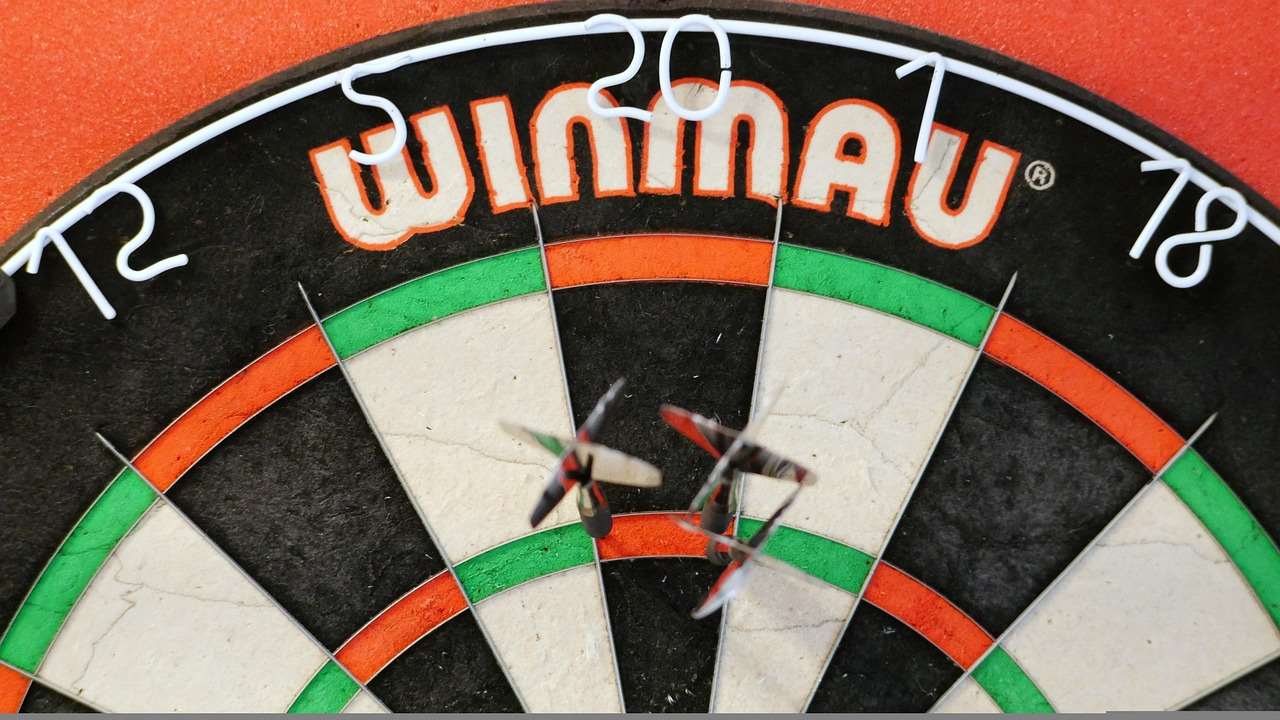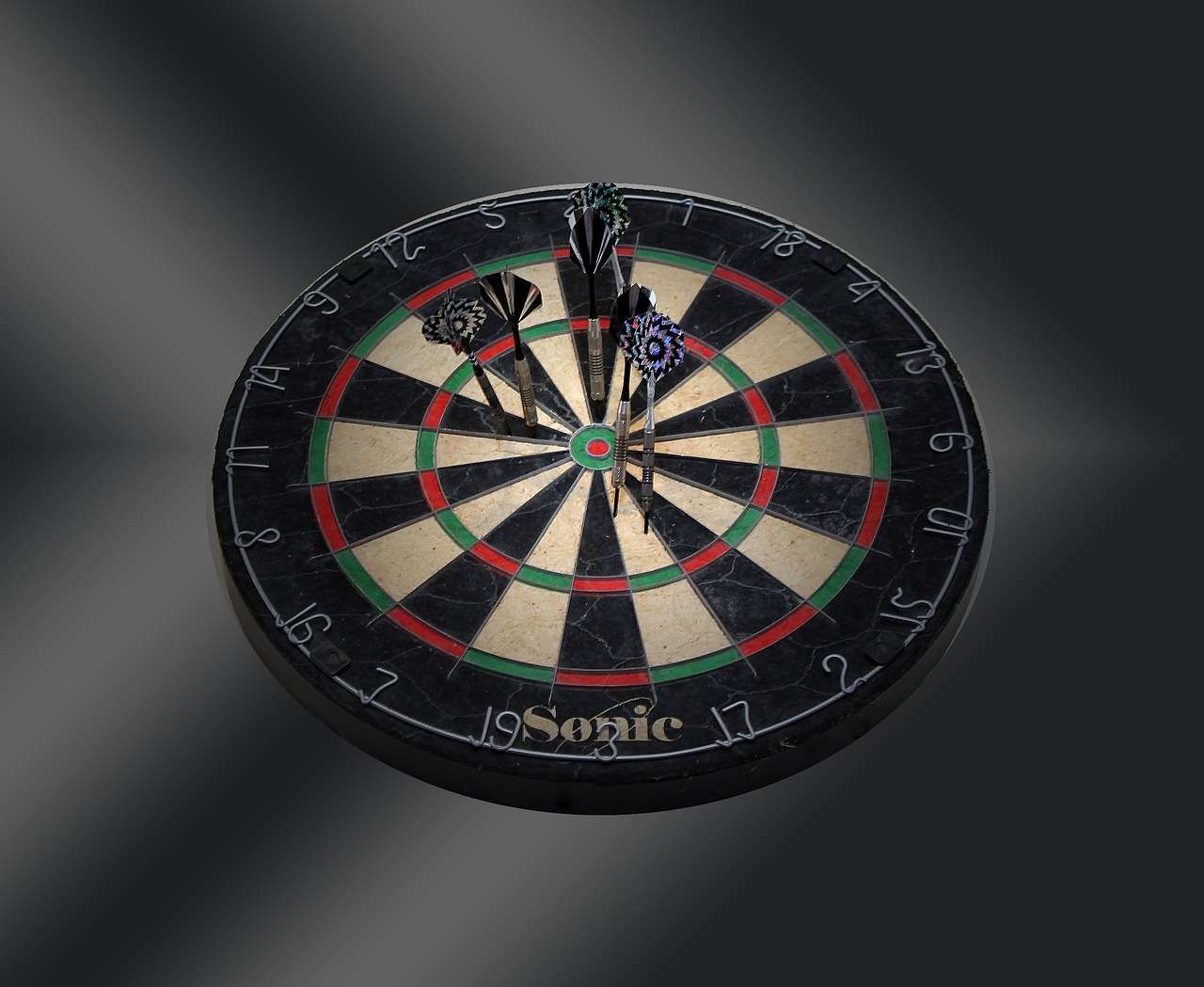When playing Cricket darts, **house rules** can significantly enhance the fun and fairness of the game, especially among players of varying skill levels. This article explores numerous **Cricket darts house rules examples**, offering customizable options to tailor the game to your specific group. We’ll cover variations in scoring, target selection, handicapping methods, and even creative twists to keep things interesting.
⚠️ Still Using Pen & Paper (or a Chalkboard)?! ⚠️
Step into the future! The Dart Counter App handles all the scoring, suggests checkouts, and tracks your stats automatically. It's easier than you think!
Try the Smart Dart Counter App FREE!Ready for an upgrade? Click above!
Understanding the Basics of Cricket Darts
Before diving into **Cricket darts house rules examples**, it’s essential to understand the standard game. Cricket is typically played with 15 through 20 and the bullseye. Players must “close” a number by hitting it three times. Once closed, only that player can score on that number until another player also closes it. The first player to close all numbers and have a higher score wins.
However, the standard rules can sometimes lead to imbalances, especially when skill differences are significant. That’s where introducing **house rules** becomes crucial. These rules allow you to level the playing field and ensure everyone has a more enjoyable experience. We can look into Darts Variants Fun Games to get inspired.

Common Cricket Darts House Rules Examples
Here are some of the most popular and effective **Cricket darts house rules examples** that you can implement in your games:
1. Handicapping Systems
Handicapping aims to equalize the chances of winning between players with different skill levels. Some common methods include:
- Pre-determined Score Advantage: Giving the weaker player a head start by adding a certain number of points to their score at the beginning of the game.
- Number Restrictions: Restricting skilled players from targeting certain high-scoring numbers (e.g., the 20 or the bullseye) until the weaker player has closed a specific number of targets.
- Extra Darts: The weaker player gets an extra dart or round per game to help them catch up.
A Handicap system fun dart games can make games between different skilled players fairer and more engaging.
2. Variations on Closing Numbers
Altering the number of hits needed to close a number can also impact gameplay:
- Simplified Closing: Requiring only two hits instead of three to close a number. This makes the game faster-paced and allows newer players to close numbers more easily.
- Progressive Closing: Starting with one hit needed to close, then increasing to two, then three as the game progresses. This adds a layer of strategy.
3. Adjusting Scoring Rules
Tweaking the scoring rules can dramatically change the game’s dynamics:
- Point Caps: Limiting the maximum score that can be achieved on any given number. For example, if a player closes a number but continues to hit it, only a certain amount of additional points are counted per round.
- Negative Scoring: Introducing negative points for hitting open numbers after closing all targets. This encourages strategic gameplay and defense.
Creative and Fun Cricket Darts House Rules Examples
Beyond the standard adjustments, you can get creative with **Cricket darts house rules examples** to inject more fun and excitement into your games:
1. The “Wild Card” Rule
Designate a number on the board as a “wild card.” Hitting this number allows the player to change one rule for the remainder of the game. This can lead to unpredictable and hilarious scenarios.
2. The “Charity” Rule
Any time a player hits the bullseye, they must choose another player to receive a bonus – either a free dart or a certain number automatically closed for them.
3. The “Reverse Cricket” Rule
Instead of closing numbers, players must *open* them. The first player to have all numbers open and be the lowest score wins. This adds a challenging twist to the standard game.

Implementing Your Cricket Darts House Rules Examples
Successfully implementing **Cricket darts house rules examples** requires clear communication and consensus among players. Here’s how to do it effectively:
1. Discuss and Agree
Before starting the game, gather all players and discuss the proposed house rules. Ensure everyone understands the rules and agrees to abide by them. This prevents confusion and potential disputes later on.
2. Write it Down
Document the agreed-upon rules. This provides a reference point throughout the game and eliminates ambiguity. A simple whiteboard or even a note on your phone will suffice.
3. Be Flexible
Don’t be afraid to adjust the rules mid-game if necessary. If a particular rule isn’t working as intended, or if players find it unfair, be open to modifications. The goal is to have fun, so prioritize enjoyment over strict adherence to pre-determined rules.
4. Consider Skill Levels
Carefully consider the skill levels of all players when selecting **house rules**. A rule that works well for a group of experienced players might be frustrating for beginners. Tailor the rules to create a balanced and enjoyable experience for everyone involved. Consider Darts for mixed ability groups to balance out the game.
Advanced Cricket Darts House Rules Examples
For seasoned players looking to add complexity, consider these advanced **Cricket darts house rules examples**:
1. Variable Target Values
Assign different point values to different sections of the dartboard, dynamically changing throughout the game. This requires players to constantly adapt their strategy and targeting.
2. “King of the Hill” Rule
The player with the highest score at the end of each round gets to dictate a new rule for the next round. This creates a constantly evolving game with unpredictable twists.
3. Progressive Difficulty Scaling
As players close more numbers, the number of hits required to close remaining numbers increases. This adds a layer of strategic difficulty to the endgame.

Tailoring Rules to Specific Player Groups
The best **Cricket darts house rules examples** are those tailored to the specific group of players. Consider these factors when making your selections:
1. Skill Level Disparity
If there’s a significant skill gap, focus on handicapping systems that level the playing field. Pre-determined score advantages, number restrictions, and extra darts are all effective options. You can find options for Darts games different skill levels to accommodate everyone.
2. Experience Level
For beginners, keep the rules simple and easy to understand. Avoid complex scoring systems or overly complicated handicapping methods. Simplified closing and adjusted scoring rules can make the game more accessible.
3. Competitive vs. Casual
If the group is highly competitive, consider rules that add complexity and strategic depth, such as variable target values or progressive difficulty scaling. For casual players, focus on fun and engaging rules that create memorable moments.
Benefits of Using House Rules
Implementing **house rules** offers numerous benefits, including:
- Increased Engagement: Customized rules make the game more engaging and exciting for all players.
- Improved Fairness: Handicapping systems level the playing field and give everyone a chance to win.
- Enhanced Enjoyment: Tailoring the rules to the group’s preferences ensures everyone has a more enjoyable experience.
- More Variety: House rules add variety to the game and prevent it from becoming stale.

Examples in Action: Sample House Rule Sets
Here are a few sample **Cricket darts house rules examples** to get you started:
Set 1: Beginner-Friendly
- Simplified Closing: Two hits to close a number.
- Pre-determined Score Advantage: Weaker player starts with 20 points.
Set 2: Competitive Play
- Point Caps: Maximum of 10 points scored on a closed number per round.
- Variable Target Values: 20 is worth double points in round 3.
Set 3: Fun and Chaotic
- Wild Card Rule: Hitting the 16 allows you to change one rule.
- Charity Rule: Bullseye gives another player a free dart.
These are just a few examples, and you can mix and match elements from different sets to create your own unique rules. Don’t hesitate when Adjusting dart game rules to create the most fun for all involved.

Documenting and Sharing Your Rules
Once you’ve established your favorite **Cricket darts house rules examples**, consider documenting them and sharing them with other dart enthusiasts. This can help spread the fun and inspire others to create their own unique variations. You can share your rules on online forums, social media groups, or even create a dedicated website or blog.
Conclusion
**Cricket darts house rules examples** are powerful tools for enhancing the fun, fairness, and engagement of the game. By carefully considering the skill levels and preferences of your players, you can tailor the rules to create a truly memorable experience. Experiment with different variations, be flexible, and prioritize enjoyment above all else. Now, gather your friends, agree on some house rules, and get ready to play some unforgettable games of Cricket! Ready to take your game to the next level? Explore other dart games and strategies to become a more versatile player!
Hi, I’m Dieter, and I created Dartcounter (Dartcounterapp.com). My motivation wasn’t being a darts expert – quite the opposite! When I first started playing, I loved the game but found keeping accurate scores and tracking stats difficult and distracting.
I figured I couldn’t be the only one struggling with this. So, I decided to build a solution: an easy-to-use application that everyone, no matter their experience level, could use to manage scoring effortlessly.
My goal for Dartcounter was simple: let the app handle the numbers – the scoring, the averages, the stats, even checkout suggestions – so players could focus purely on their throw and enjoying the game. It began as a way to solve my own beginner’s problem, and I’m thrilled it has grown into a helpful tool for the wider darts community.